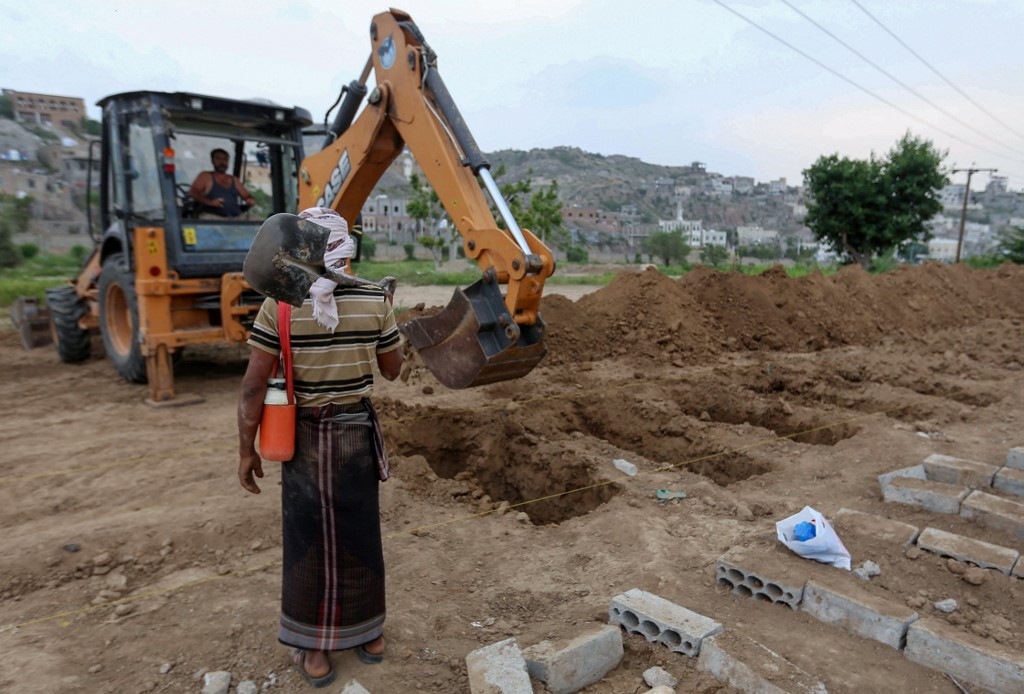Satellite images suggest deaths almost doubled in Yemen's Aden during pandemic

A new study using satellite technology found that the number of deaths in Yemen's port city of Aden had almost doubled during the coronavirus pandemic, researchers said on Wednesday.
Academics at the London School of Hygiene and Tropical Medicine (LSHTM) analysed the burial activity of all cemeteries in the Aden governorate using high-resolution satellite images.
They calculated 2,100 excess deaths between April and September against an expected baseline of about 1,300 deaths.
'We believe this is the first time satellite imaging has been used to help model the impact of infectious disease outbreaks'
- Francesco Checchi, researcher
Yemen's government had reported only 600 deaths and 2,064 coronavirus infections, despite humanitarian groups warning that the outbreak was far more severe.
Emilie Koum Besson, one of the lead researchers, said the method used cannot identify whether the deaths were actually caused by the coronavirus, but the "excess mortality attributable to the Covid-19 pandemic in humanitarian settings captures the whole-system impact of the pandemic".
Stay informed with MEE's newsletters
Sign up to get the latest alerts, insights and analysis, starting with Turkey Unpacked
While the research has not been peer-reviewed, the academics cited other studies to strengthen their analysis, including videos in May that reported big numbers of new graves, as well as the use of mechanical excavators instead of human gravediggers, which showed demand for graves was exceeding the supply.
Yemen, said by the United Nations to be suffering the world's worst humanitarian crisis, has been beset with violence from its five-year civil war, which has hurt the civilian population. Air strikes have targeted hospitals and civilian infrastructure, leaving the health sector with a severe lack of supplies even before the Covid-19 outbreak.
Huge surge in hospital admissions
During the same period the researchers analysed, Doctors Without Borders (MSF) had also reported a surge in hospital admissions, with a high case-fatality ratio. A lack of adequate resources had caused hospitals to turn away patients who had potentially contracted the virus.
US-based charity MedGlobal reported in July that only half of the country's medical facilities were functioning, and that there were fewer than 10 medics for every 10,000 people.
It said that about 18 percent of the country's 33 districts had no doctors, with people having died while waiting in hospital lobbies.
The ongoing war has devastated the country, with about 80 percent of the population - 24 million people - requiring some form of humanitarian or protective assistance, according to the United Nations Office for the Coordination of Humanitarian Affairs (UNOCHA).
The LSHTM said that the new method of analysing deaths may help to more accurately report on infectious disease outbreaks during humanitarian crises, and better inform humanitarian groups on how best to respond.
"We believe this is the first time satellite imaging has been used to help model the impact of infectious disease outbreaks. This new technique is very exciting for global health," said Francesco Checchi, one of the principal researchers.
"Remote analysis could pave the way for the development of accurate health data in areas where this is currently not possible, providing organisations and policymakers with new evidence to make potentially life-saving decisions."
Middle East Eye delivers independent and unrivalled coverage and analysis of the Middle East, North Africa and beyond. To learn more about republishing this content and the associated fees, please fill out this form. More about MEE can be found here.





